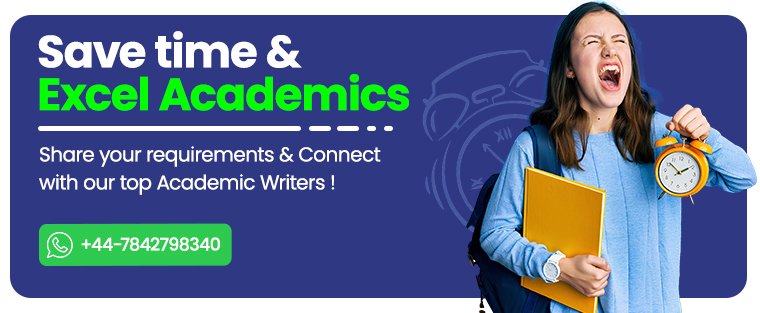Exploring Learning Theories and Motivational Strategies for Student Development
1a. Analysing theories, principles and models of learning
Cognitivist learning theory focuses on the way that information is received, organised and stores as well as retrieved by the mind. It is also considered as self-directed learning where the students are asked to reflect upon own understanding, finding new solutions, helping the students to improve personal and professional development as well as visualizations to improve students' understanding and recall. education dissertation help is crucial in exploring how these cognitive processes can be effectively applied. Behaviourism, learning theory is effective to develop the behaviour of the children through developing cognitive skill and behaviours (Makransky, Terkildsen and Mayer, 2019). On the other hand the motivational theory of Maslow’s hierarchy of needs is also effective to encourage the student for participating in the learning programs. There are training and learning programs arranged for the students where the students are treated fairly and their personal needs are fulfilled in the schools. The principle of student assessment through formal assessment, examination, observation and practical exercise is also beneficial.

1b. Explaining ways in which theories, principles and models of learning can be applied to teaching, learning and assessment
The theories and principles of learning are implemented in the school to support the children, where through enhancing communication, group learning opportunities, inclusive learning practices and open discussion are effective to implement the models of learning. Classroom management through equality and diversity, safety of the students, avoiding stereotyping, tackling language gap and developing strong bonding are also helpful to implement the educational principles (Hayes and Hofmann, 2018).
Continue your journey with our comprehensive guide to an Inclusive Learning Space.
1c. Analysing models of learning preferences
VARK model is effective for learning preferences, where the teaching professionals try to develop audio visual training and learning activities to support the children with special needs. Additionally, there are reading and kinaesthetic learning activities where the students can gain understanding and be encouraged to participate actively.
Continue your exploration of Exploring Learning Discrepancies with our related content.
1d. Identifying and taking account of learners’ individual learning preferences enables inclusive teaching, learning and assessment
In order to meet the learner’s individual preferences, the teaching professionals try to develop inclusive learning practice where the students can engage with the teachers and share their perception and requirements (Lefrancois, 2019). The teachers also enhance internal communication and provide learning environment where the students can improve their knowledge and skill. Through applying the educational policies and practice as well as continuous support to the students, it is possible to identify the child needs and develop lesson plan, curriculum design and create small teaching group so that one to one interaction can be developed to guide each student effectively.
Dig deeper into Motivation for Management Studies with our selection of articles.
2a. Analysing theories, principles and models of communication
The teachers mainly focus on interactive communication, where group discussion, team work and one to one interactions are developed in the training programs, so that each student can participate and get equal opportunity to share their knowledge and perceptions. In this context, both verbal and non-verbal communication is effective to manage cultural diversity and language gap where the students get suitable learning environment.
Looking for further insights on Educational Strategies for Empowerment? Click here.
2b. Explaining ways in which theories, principles and models of communication can be applied to teaching, learning and assessment
Blooms Taxonomy of Learning is effective to implement communication model and as per the Blooms Taxonomy of Learning, there are six stages which are remembering, understanding, applying, analysing, evaluating, and creating. The students are encouraged to explore new things and apply the information for further analysis and it further motivate the students and improve their confidence to perform efficiently (Gorbunova and Zalivadny, 2018). Here, verbal and non-verbal communications are effective to engage with the students and improve their knowledge and abilities. Written instructions, face to face communication, discussion over specific subject matter as well as non-verbal activities through sharing word documents and files with the students are also effective to guide them properly.
3a. Analysing theories, principles and models of assessment
There are several assessment methods through which it is possible to evaluate the student’s performance. Screening, diagnostic, formative assessment through examination as well as classroom test and quiz are effective process of assessing the students. The teachers also try to develop practical based work and group working activities to review the performance and contribution of each team member in the project.
3b. Explaining ways in which theories, principles and models of assessment can be applied in assessing learning
The theories of assessment are applied in the education and training through formal assessment of tests and yearly examination for reviewing the skills set and knowledge of the participants. Additionally, the teachers try to conduct survey and questionnaire for identify student capabilities to participate. Additionally, in the schools, there are quiz programs and practical based assignments for reviewing the student capabilities.

4a. Analysing theories and models of curriculum development
For curriculum development, the theories of educational ideology and sociological issues are effective to meet the education and training standard. The progressive format and maintaining instrumental learning are also beneficial to design curriculum as per the needs of the students. Academic educational ideologies are maintained by developing theory based content and training programs as well as there are attest instruments which are utilised to create good curriculum planning for the students in the recent years (Hilpert and Marchand, 2018). The linear model through step by step approach is effective to design simple curriculum for the students and on the other hand the spiral curriculum model is also effective to improve reading skill to learn more.
4b. Explaining ways in which theories and models of curriculum development can be applied in developing curricula in own area of specialism
For applying the curriculum models in the schools, the teachers try to utilise latest technology and IT for sharing the educational resources including files and presentations so that it can develop understanding of the students about the curriculum and learning. For enhancing teaching practices, the teachers also try to create small group learning activities and inclusive learning which further helps to implement curriculum design and improve the language, literacy and numeracy of the students through training and classroom session.
5a. Analysing theories and models of reflection and evaluation
Self-reflection and evaluation are effective to analyse own capabilities and assess performance in education and training. Gibb reflective model is effective here to share own experience and develop further planning for personal and professional skill enhancement (Surr et al., 2017). As per the Gibb reflective model, there are description, feelings, evaluation, analysis, and conclusion and action plan. On the other hand, for evaluation of own practice, it is also effective to collect qualitative and quantitative data and develop further planning to enhance own knowledge and capabilities.
5b. Explaining ways in which theories and models of reflection and evaluation can be applied to reviewing own practice
Reflective practice provides a scope to share the experience and create plan for further skill and knowledge development. Through gathering experience and understanding the feedback, it is possible to reflective upon own experience. Gibbs framework is beneficial for personal reflection in education and training for sharing the training practices, educational ideologies and principles of curriculum design so that it would be possible to support the children with special needs.
Looking for further insights on Exploring Learning Discrepancies? Click here.
Reference List
Gorbunova, I.B. and Zalivadny, M.S., 2018. The Integrative Model for the Semantic Space of Music: Perspectives of Unifying Musicology and Musical Education. Music Scholarship/Problemy Muzykal'noi Nauki, (4).
Hayes, S.C. and Hofmann, S.G. eds., 2018. Process-based CBT: The science and core clinical competencies of cognitive behavioral therapy. London: New Harbinger Publications.
Hilpert, J.C. and Marchand, G.C., 2018. Complex systems research in educational psychology: Aligning theory and method. Educational Psychologist, 53(3), pp.185-202.
Lefrancois, G.R., 2019. Theories of human learning. London: Cambridge University Press
Makransky, G., Terkildsen, T.S. and Mayer, R.E., 2019. Adding immersive virtual reality to a science lab simulation causes more presence but less learning. Learning and Instruction, 60, pp.225-236.
Surr, C.A., Gates, C., Irving, D., Oyebode, J., Smith, S.J., Parveen, S., Drury, M. and Dennison, A., 2017. Effective dementia education and training for the health and social care workforce: a systematic review of the literature. Review of educational research, 87(5), pp.966-1002.
- 24/7 Customer Support
- 100% Customer Satisfaction
- No Privacy Violation
- Quick Services
- Subject Experts



